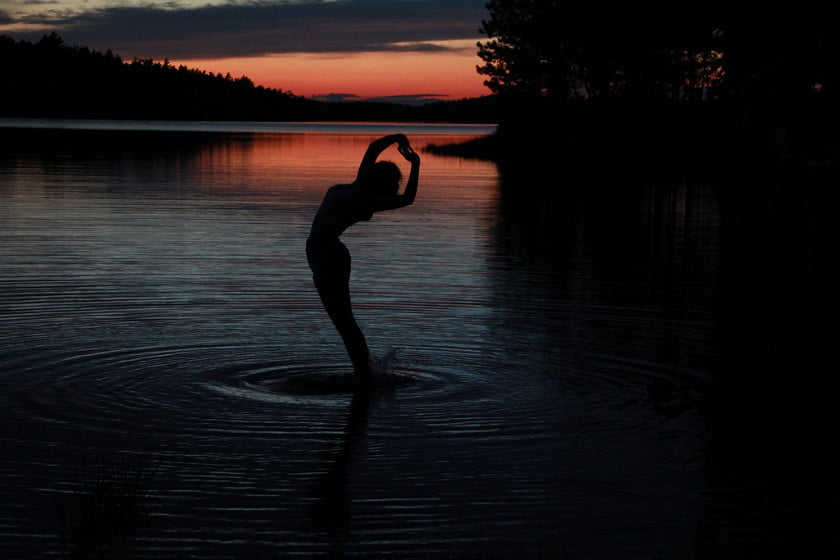
Mermaids. Throughout the world, these half-fish, half-human creatures have embedded themselves in folklore and legend, film and literature.
The first known story was that of the Syrian goddess Atargatis, who inadvertently transformed into a mermaid. She had intended to become a fish, as self-punishment for killing a human she loved. But the powers that be prevented her from giving up her full beauty, instead only transforming her lower half into a fish tail.
Ever since, stories of mermaids have proliferated throughout nearly every culture, from Ancient Greece and their mythological sirens to the alleged sightings of enchanted merfolk by Caribbean sailors. And let’s not forget P.T. Barnum’s own Fiji mermaid, circa 1842, originally purchased by Samuel Barrett Edes in 1822 from a group of Japanese sailors:

However, in recent years, something even stranger has happened, beyond old stories and hoaxes. Mermaids have entered the mainstream, with some questioning if perhaps these mythological creatures may, in fact, be real.
Alleged Mermaid Sightings
There have been many claims of mermaid sightings over the years, particularly in Southern Africa. In 2012, work on a Zimbabwe reservoir was delayed due to what the country’s Water Resources Minister claimed were “mermaids…hounding workers away.” He later said that the solution to the problem would be to “brew traditional beer and carry out any rites to appease the spirits.”
In 2008, a mermaid known as Kaaiman was allegedly sighted in South Africa emerging from the Buffelsjags River. A group of friends had been hanging out near the river when they were interrupted by a strange sound emanating from a low water bridge. One of them went to investigate, and found what he at first believed to be a “white woman with long black hair thrashing about in the water.” But a second look, he claimed, revealed an odd “shine in her eyes.”
And in 1967, several passengers of a ferry in British Columbia, Canada claimed to have witnessed “a mermaid sitting on a rock eating a salmon.” The mermaid, as described, had long hair and was half-human, half-porpoise.
These are, of course, unsubstantiated anecdotes. But in 2012, a widespread belief in mermaids was seemingly reinvigorated, at least for a little while.
Enter The Discovery Channel
That year, the Discovery Channel raised quite a few eyebrows when they aired a “documentary” titled Mermaids: The Body Found.
While completely fictional, it was presented in a way that led many to believe it was a real investigation providing real evidence for the existence of mermaids.
The same would happen in 2013 with a similar “documentary” called Megalodon: The Monster Shark That Lives.
Both docudramas, as the channel dubbed them, caused quite the controversy, but it was Mermaids: The Body Found that spurred NOAA to release a statement assuring everyone that, no, there’s no actual evidence for the existence of mermaids:
“No evidence of aquatic humanoids has ever been found. Why, then, do they occupy the collective unconscious of nearly all seafaring peoples? That’s a question best left to historians, philosophers, and anthropologists.”
However, that wasn’t the end of it. A year later, Animal Planet, also owned by Discovery Communications, aired a sequel to The Body Found called Mermaids: The New Evidence. That’s where we got this “shocking” footage:
How anyone was convinced that either of these docudramas were real, I don’t know. But as Orson Welles demonstrated in 1938, you make anything even slightly realistic in its presentation, and someone, somewhere, will believe it.
Are Mermaids Real?
Now, you may be wondering, why can’t mermaids exist? Just because you’ve never seen a mermaid doesn’t mean they aren’t real.
Well, in her article “Fishful Thinking: Five Reasons why Mermaids Can’t Physically Exist,” Shea Steingass provides a short vignette on the physical and biological limitations of mermaids, were they to actually exist.
“Most scientists wouldn’t touch the subject of mermaids with a ten foot pole- I am going full contact.”
She looks at problems like temperature, the evolutionary mish-mash of body parts, and other obstacles that would prevent The Little Mermaid’s Ariel from becoming part of our world.
Does that mean mermaids couldn’t exist in some other form, far removed from the enchanting sirens of the sea we’ve come to know and love? Possibly. But it’s very unlikely, if they did exist, that we wouldn’t have evidence by now.
Personally, reluctantly, I’m going to have to side with NOAA on this one.
Do You Want To Be A Mermaid?
I will, however, leave you with this: there are apparently groups of people out there who either believe they’re mermaids or, through sheer power of will, believe they can become mermaids. Something along the lines of Clinical lycanthropy (werewolves) or those who believe they’re psychic vampires.
How does one become a mermaid? The process involves something called p-shifting – that is, physical shifting – using spells or rituals. It’s all very strange, but if you’d like to learn more about the mermaid underground, I suggest you head over to this page, which contains a kind of “study” of the phenomenon. Good luck.






